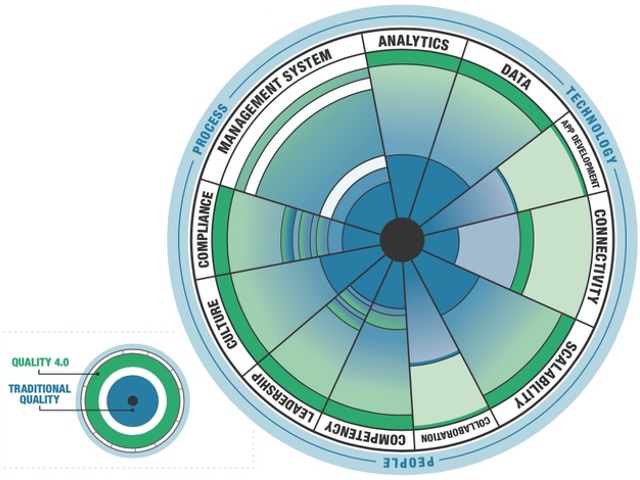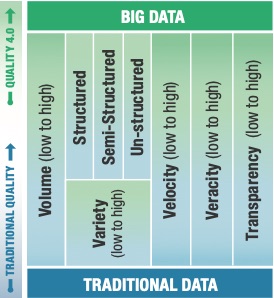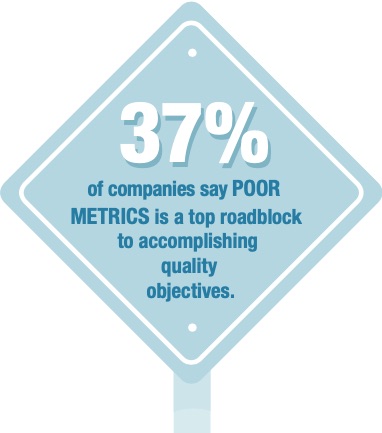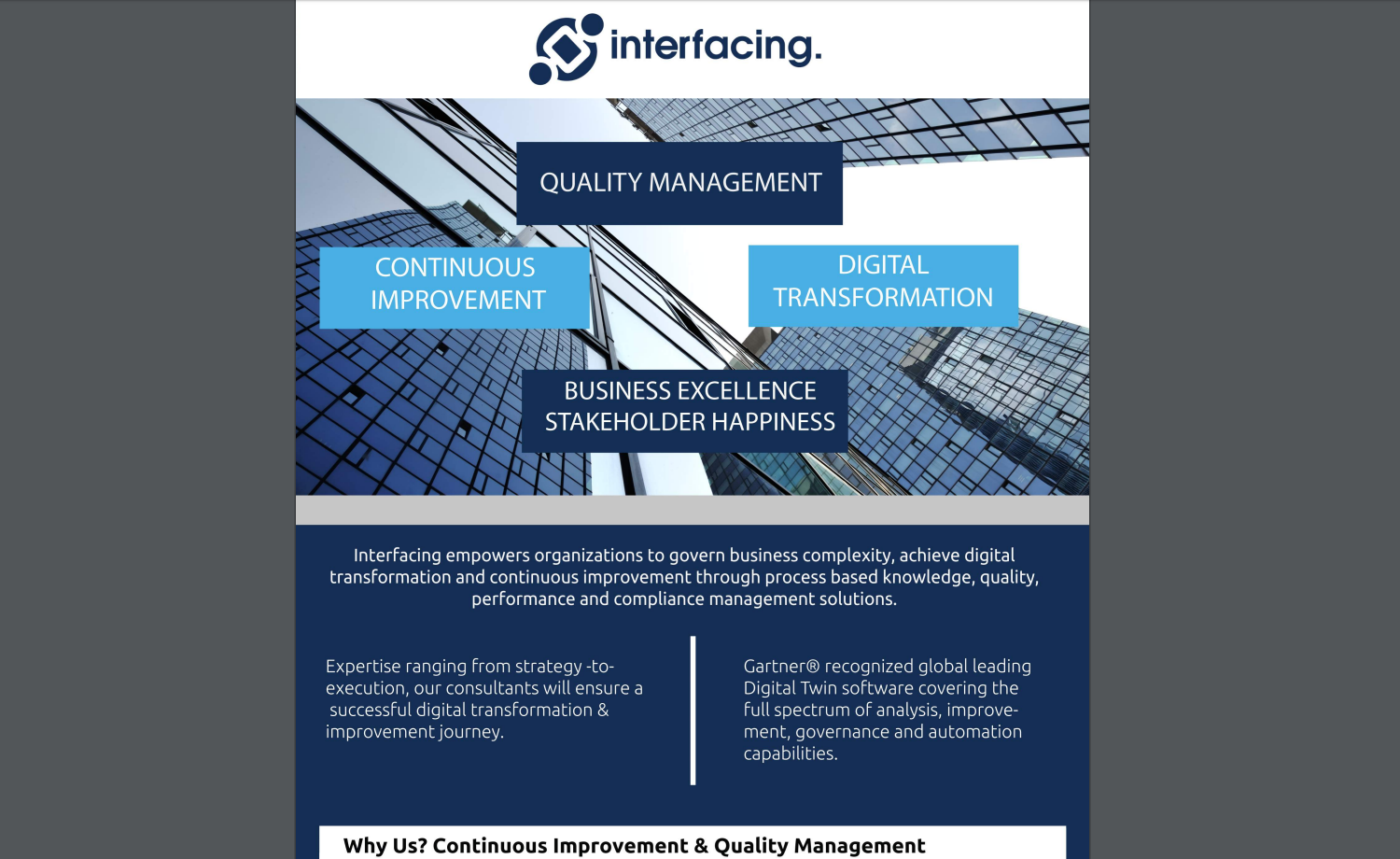Is Quality 4.0 the Future of Quality? It is, and Here’s Why.
Disruptions Driving Quality 4.0 To The Forefront
Quality 4.0: We are now deep within what most would agree with as Industry 4.0 – the fourth industrial revolution. We’ve made some great technological advancements in analytics, data, scalability, collaboration, and connectivity, to name a few. These achievements not only drive innovation but represent true paradigm shifts in the conceptualization, creation and delivery of products and services.
These innovations – everything from Artificial Intelligence, including machine and deep learning, big data, augmented and virtual reality, cloud computing and the Internet of Things have made a significant impact not only in their value and design but also in their ability to interact with each other, presenting an opportunity and a necessity for a business to adapt and evolve.
Disruptions of this scale will drive seismic transformation in the day-to-day business of a vast majority of organizations. This affects cultural change, including leadership and workforce areas, feeding into product innovation, supply chain performance, compliance, manufacturing efficiency, and of course, quality. It is at this stage that Quality 4.0 becomes a significant factor of consideration. In short, the core concept of Quality 4.0 is in the alignment between the practices of quality management with emerging innovations as an output of Industry 4.0, driving organizations to find ways to work towards operational excellence.

Source: Insresearch
Quality 4.0 – 11 segments forming the framework
*LNS research identified 11 segments of a Quality 4.0 framework that includes both familiar and unfamiliar quality considerations to help organizations toward the adoption of Quality 4.0.
Data: This has always been the driver for improvement in the quality sphere— however most organizations still fall short when it comes to the process of data analysis, collection, and decision-making. Industry 4.0 technological advancements have helped in the areas of artificial intelligence (AI), machine learning (ML), and analytics, offering organizations benefits of real-time visibility on critical metrics: manufacturing and internal engineering performance, customer service, and supplier performance. Quality 4.0’s key component is in the rapid but structured collection of data from various sources to allow for informed and agile decision-making.

Connectivity: If we look at connectivity in terms of Quality 4.0, we see references to the connection between operating technology (OT) and information technology (IT). As and understanding of each, OT refers to the technology used in manufacturing, service, and laboratory environments while IT refers to tools, including enterprise resource planning, enterprise quality management systems, and product lifecycle management. This connectivity between OT and IT has led to sensors connecting people (through mobile devices, wearables, etc.), edge devices (performing local analytics without lag-time exchange to a central server), products (e.g., providing continuous feedback along its lifecycle) and processes. The structured collection of real-time or very near real-time feedback is now leveraged to upscale quality to 4.0.
Collaboration: Enterprise Quality Management System (eQMS) software helps organizations increase efficiency and improve compliance by streamlining and synthesizing quality processes. LNS Research has reported that only 21% of organizations adopted a core eQMS. This leaves the greater majority of businesses left using portals, automated workflows, and even emails to manage critical quality activities. By introducing Quality 4.0, your organization will leverage new tools – for example, blockchain and social listening to gather insights into areas such as customer satisfaction and gain significantly stronger visibility into supply chains’ parts and products’ movement.

Management systems: As we’ve seen earlier in the blog, only 21% of organizations embraced an enterprise quality management system fully aware of the benefits (scalability, providing centralized analytics, connecting quality processes) that a proper eQMS would bring to the business. In order to make full use and enjoy the many benefits of Quality 4.0, organizations will need to look at automating processes with software and integrate and connect these newly automated processes with other systems and operations. BY improving your systems autonomy, your organization will reduce the time that your high-value employees will spend on execution, allowing them now to shift focus toward innovation and improvement.

Source: Insresearch
Compliance: Concerning compliance, Quality 4.0 brings a new set of techniques and tools that can be implemented to automate activities. For example, organizations can share compliance approaches across different work sites and divisions deemed successful through social collaboration. Data analytics would alert organizations about breaches of compliance. This would immediately allow for swift preventative remediation to take place. Integration of both OT and IT would help automate any compliance-related tasks and data collection. This is where Quality 4.0 allows any organization to perform an assessment of current compliance strategies and identify any opportunities that may improve the current state.
Culture: Many organizations profess a “culture of quality.” According to LNS’s research, though, only about 13% of cross-functional teams have a clear understanding of how quality contributes to overall strategic success. Through the connection of data, processes, and analytics, and thereby seeing improvements in visibility, collaboration, connectivity, and insights, Quality 4.0 makes achieving a true Quality 4.0 culture even more attainable.
Leadership: Proponents of quality who work in these roles believe very much in its importance. This is understood and expected. The concern is that this attitude doesn’t always translate well up to the senior leadership team. When we look at the LMS report, we see 37% of organizations that believe quality is crucial for customer service. They noted that 26% would agree that quality is an important component in delivering corporate strategy, and only 13% stated that the quality function is a priority for top-level management.
Competency: Competency can be improved using a variety of technologies in a Quality 4.0 environment. Social media would be used to share experiences and lessons learned across and between organizations. AI and ML outputs would be utilized in developing new expertise. AR and VR systems can now be used in worker expertise development. Smart devices and wearables can be used to assist with employee performance and appraisal, while AR and VR would be deployed as a tool used to improve training delivery.
Last Thoughts
It would be a major understatement to say all the advancements made in technology in the past few years were anything short of transformative in nature. Quality 4.0 is a perfect solution to make use of Industry 4.0 technologies in realigning all quality functions within the greater overall organizational strategy. Keeping in mind that 13% of top management sees quality as a significant driver of strategy, adopting Quality 4.0 would provide the proper scope to alter the perception of the quality function in any organization giving credence to addressing long-standing quality issues.
In short, Quality 4.0 is the future of quality.

